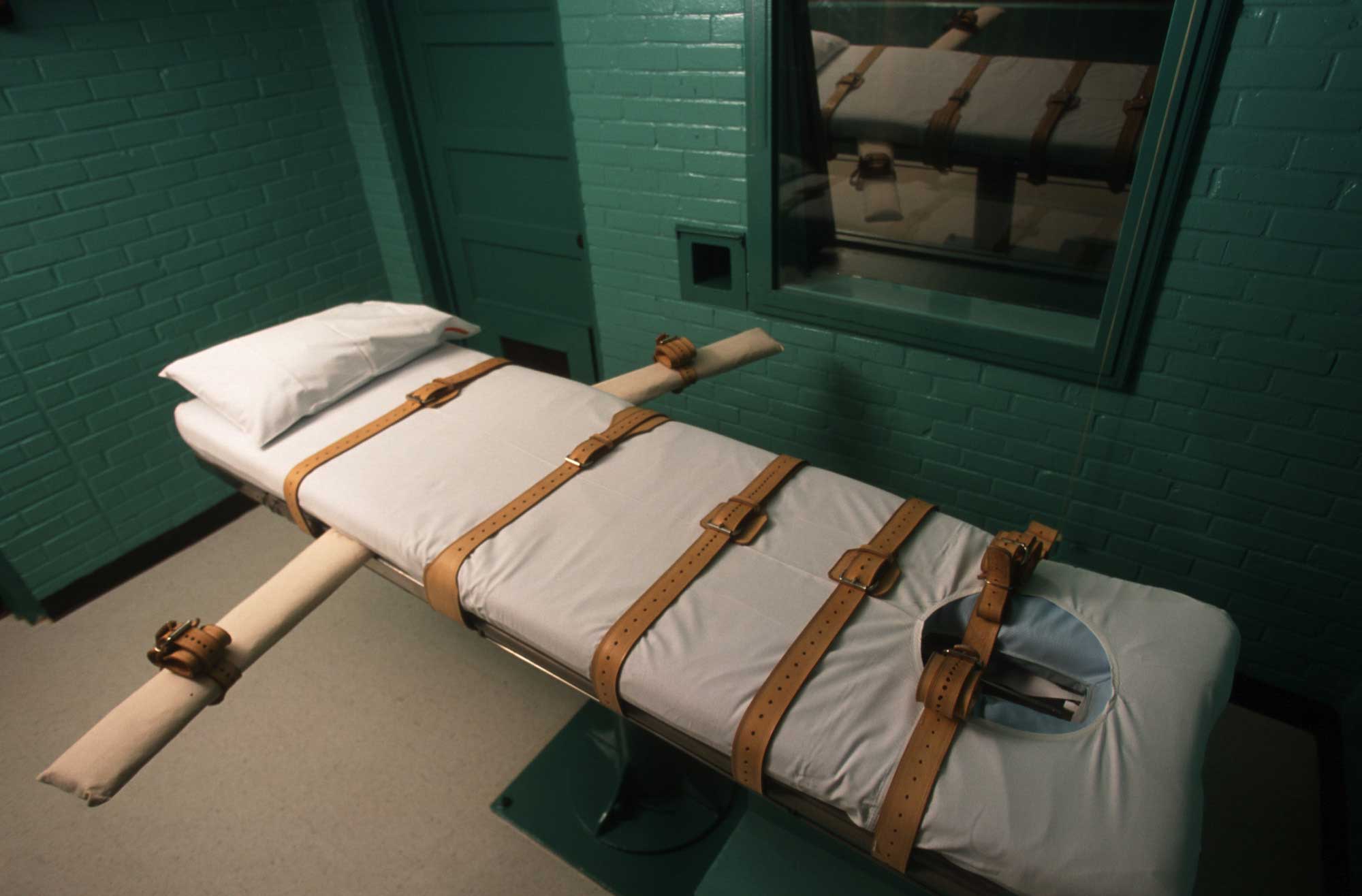
How would you rate our country’s execution methods? This is not a question of whether you support the death penalty, or whether you think it’s necessary to use the most humane method of execution. This is simply a question of service: How would you rate the basic quality of the service states provide when they conduct executions?
This question is particularly important right now as the Supreme Court prepares once again to address a state’s use of lethal injection when it hears arguments in Glossip v. Gross on April 29. Lethal injection, the method of execution currently used by death-penalty states for almost all executions, was first enacted by Oklahoma in 1977. The state’s previous method, electrocution, was deemed too costly and grisly. The state sought a method that looked soothing to viewers, like putting a dog to sleep. When the state’s medical association declined to assist in developing such a method, legislators turned to the state’s medical examiner. The medical examiner drafted a lethal injection protocol in one day.
Oklahoma’s three-drug protocol was quickly adopted by other states despite no medical and scientific study as to its effectiveness. From the time Texas first used lethal injection in a botched 1982 execution to the U.S. Supreme Court’s first review of the protocol in 2008, there have been numerous botched lethal-injection executions across the country.
Indeed, if we view execution by lethal injection as a business, it’s one that follows an unusual model: The most qualified people, such as experienced anesthesiologists, rarely participate due to professional restrictions or personal beliefs. States therefore delegate responsibility to unqualified prison officials, leaving them to make critical decisions involving complex issues of anesthesia and pharmacology. Imagine eating at a restaurant that uses the worst food available and employs chefs who have never before even boiled an egg. How would you rate it?
The challenges faced by lethal injection have become even more disturbing in the last seven years. Shortages in lethal injection drugs have compelled execution officials to make unfettered and reckless drug substitutions based on convenience and accessibility. Consider the execution of Clayton Lockett in Oklahoma last year on April 29. Officials chose to use the drug midazolam for Lockett’s lethal injection, despite enormous criticism of the drug’s viability and its problematic history in prior executions. Lockett’s 43-minute execution became a procedural disaster involving unlabeled syringes, incorrectly sized needles, improper IV placement, and a doctor who confused a vein and an artery. The drugs leaked into Lockett’s tissue, and he unexpectedly regained consciousness. The execution was stopped, and he died 10 minutes later while officials and executioners were debating whether he should receive medical care.
In Wednesday’s case, the Supreme Court will address the question of whether a state is constitutionally permitted to perform a three-drug lethal injection using midazolam as the first drug because midazolam heightens the risk that an inmate will be conscious and aware—and therefore suffer inexorable pain and suffering—when the second and third drugs are administered.
Some states are already taking precautions as they await the Supreme Court’s decision. Last year Tennessee adopted electrocution as a fallback method if no lethal injection drugs are available, but this solution is far from ideal: Electrocution’s horrific history is the very reason states turned to lethal injection in the first place. Oklahoma will now allow for nitrogen-gas hypoxia if lethal injection drugs are unavailable or the method itself is found unconstitutional. Yet descriptions of nitrogen-gas as painless and humane bear eerie parallels to early optimism regarding lethal injection, and the method also could involve untrained prison officials and inept executioners.
If this country is going to have a death penalty, there is only one method of execution that merits a positive rating: the firing squad. This method stands alone because it is the only one that involves experts specifically trained to kill human beings as well as a record of relative speed and certainty. Some people may resist the notion of execution by firing squad because they view it as barbaric, but as problems with lethal injection become increasingly public, opinions may change. Indeed, Utah just brought back the firing squad as a fallback after having restricted its use over a decade ago.
The question of how we rate ourselves as a country, given our history of execution methods, merits careful consideration. The execution process is part of our national identity. We may hesitate to use a firing squad because it seems like a throwback to the Wild West rather than any sort of evolution. Yet the firing squad may well serve as an important, if uncomfortable, reminder: The death penalty has always been about punishment, notwithstanding efforts to give it the medical veneer of soothing sleep.
The pending Supreme Court decision in Glossip will bear on one of this nation’s most weighty responsibilities—the taking of a life—and what it says about us as a citizenry. In my mind, that evaluation rates five stars in significance.
More Must-Reads from TIME
- Donald Trump Is TIME's 2024 Person of the Year
- Why We Chose Trump as Person of the Year
- Is Intermittent Fasting Good or Bad for You?
- The 100 Must-Read Books of 2024
- The 20 Best Christmas TV Episodes
- Column: If Optimism Feels Ridiculous Now, Try Hope
- The Future of Climate Action Is Trade Policy
- Merle Bombardieri Is Helping People Make the Baby Decision
Contact us at letters@time.com